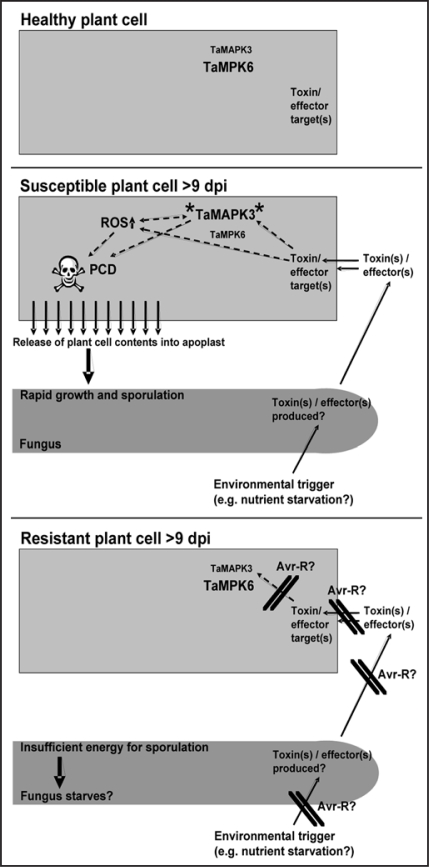Figure 1.
Models illustrating the events that occur in wheat leaf cells during susceptible and resistant interactions with the necrotrophic fungal pathogen, Mycosphaerella graminicola. The models suggest that specific fungal toxin(s)/effector(s) targets are present in a healthy plant cell, along with relatively large amounts of the TaMPK6 protein when compared to TaMPK3 protein levels (indicated by different font sizes). During a susceptible disease interaction, approximately nine days post inoculation (dpi), inverse changes in the relative levels of the two MAPK proteins are observed. At this stage the fungus is stimulated to produce, as yet un-identified, toxin(s) and/or effector(s) that trigger the post-translational activation (**) of TaMPK3. These events occur in parallel with the activation of programmed cell death (PCD) signalling, which may also include the generation of reactive oxygen species (ROS). The net effect is a loss of host membrane integrity and the release of nutrients from dying plant cells which supports increased fungal growth and asexual reproduction. None of these responses occur during a resistant interaction. The possible sites for protective function of corresponding Avr-R protein combinations are indicated as parallel crossed lines. The net outcome of the lack of plant cell reactions during host resistance is a limitation on the nutrients available to the necrotrophic fungus which prevents its further proliferation.

